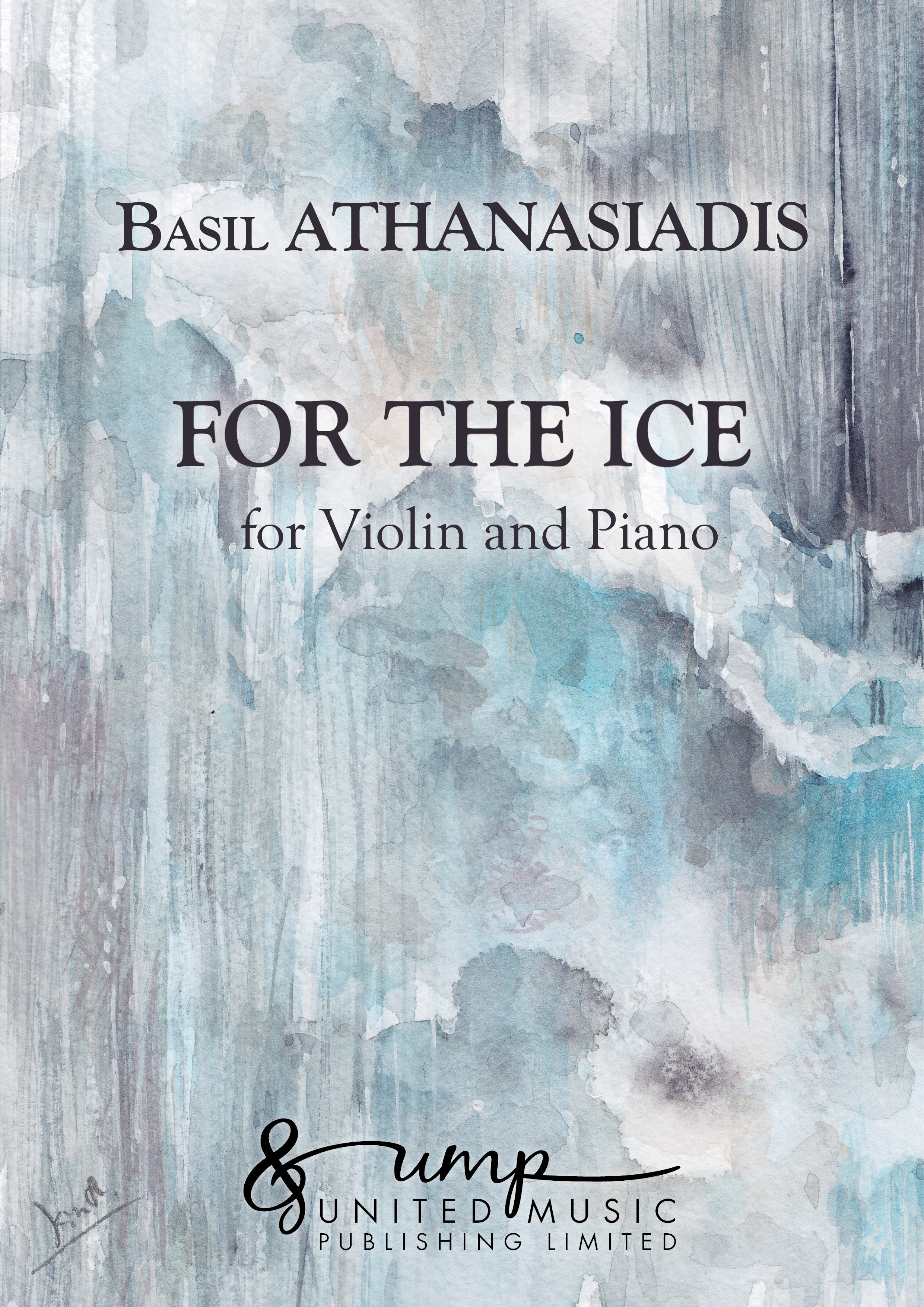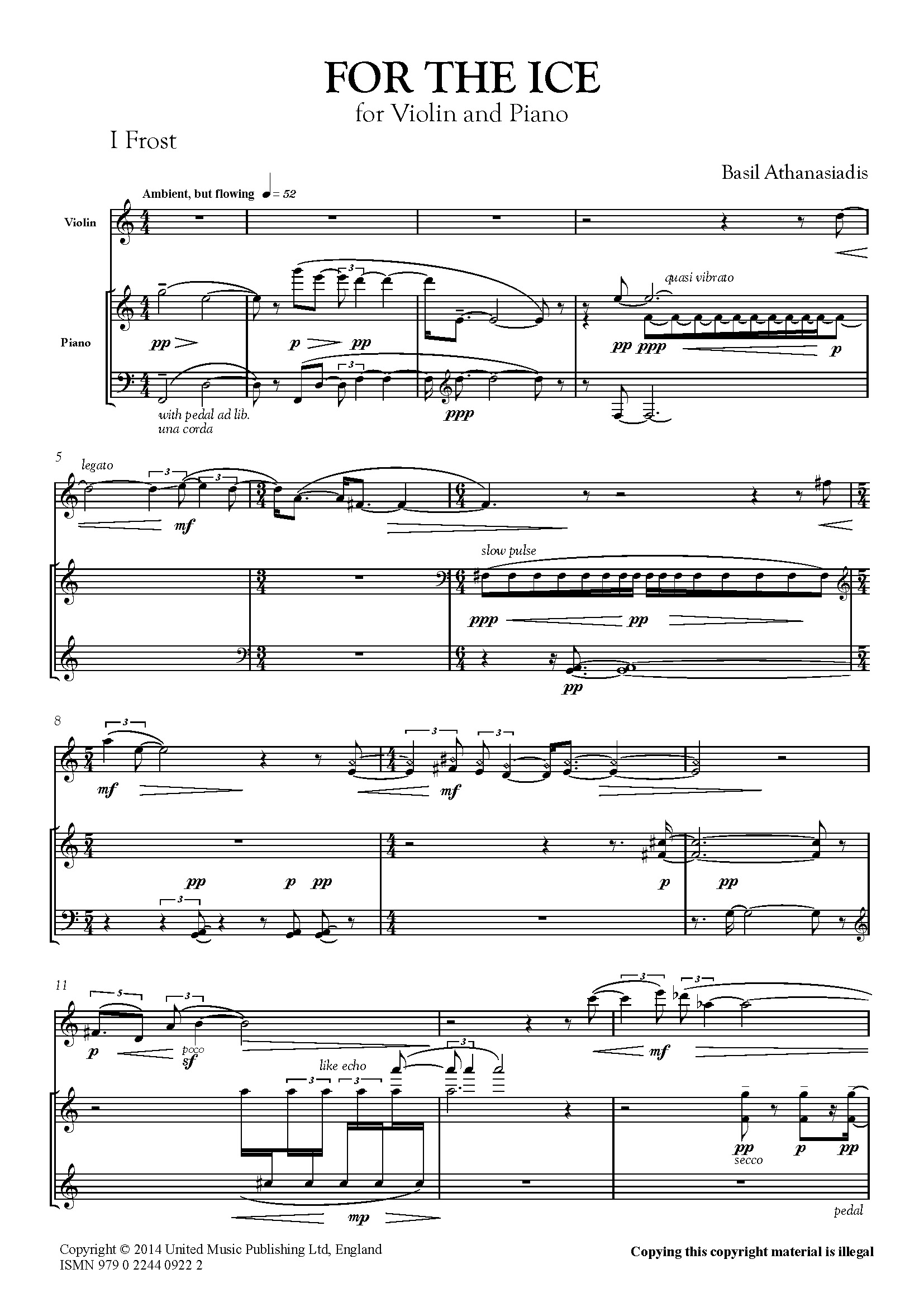For the Ice is a work that integrates, to a certain extent, elements drawn from Chinese and Japanese music: the concept of ma (space between sound events), the use of homophony (as opposed to the counterpoint often employed in Western music), rhythmic disjunction between parts (described by William Malm as the ‘sliding doors effect’), and the use of timbre. These elements function as mechanisms that reinforce the forward drive of
the music.
First performance: 19 December 2010, Tokyo Art Pass Festival, Tokyo University of the Arts and Music, Stelios Chatziiosifidis, Junko Nakamura.

